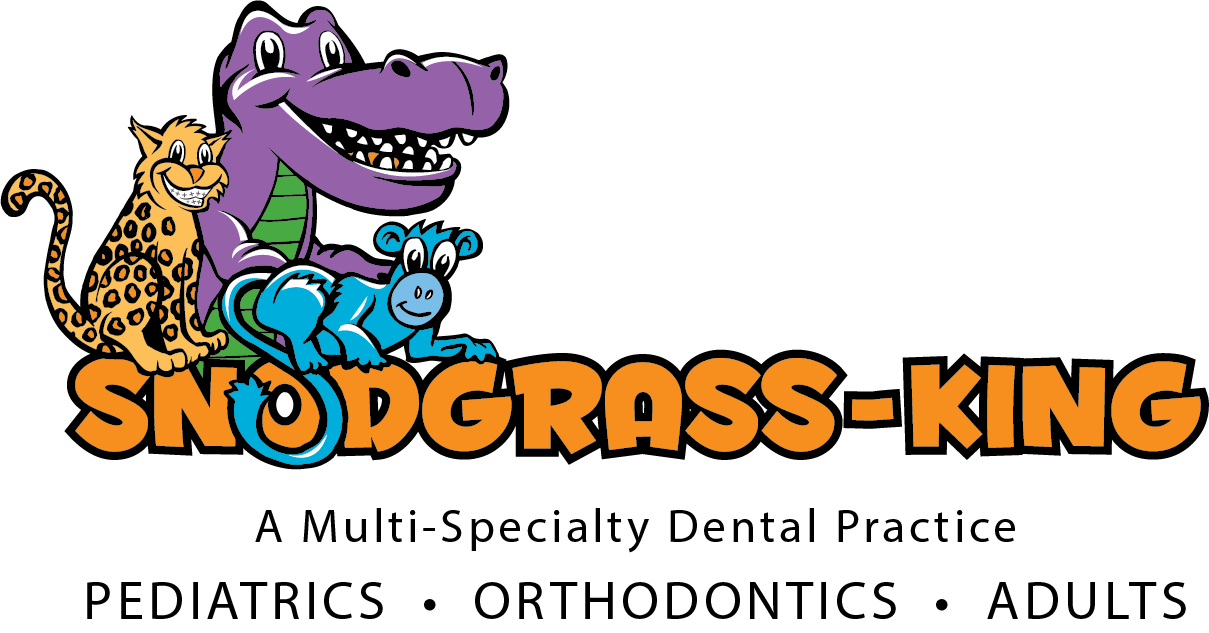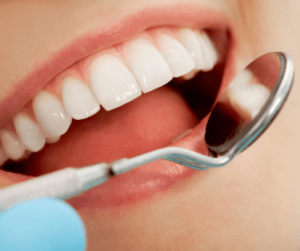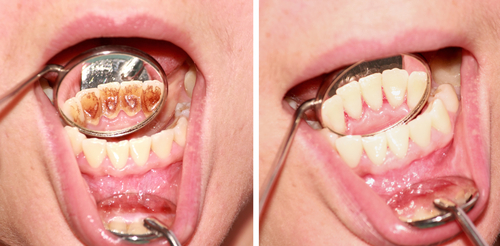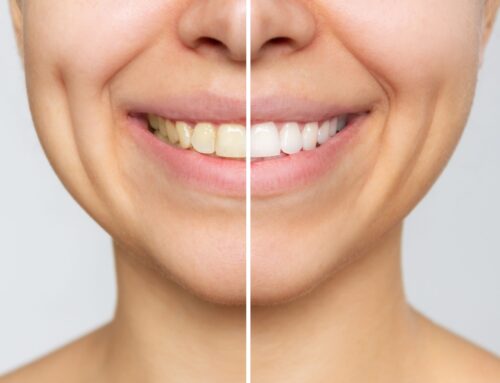 What to Know About Tartar Build-Up and Your Teeth
What to Know About Tartar Build-Up and Your Teeth
Do you feel your teeth are looking a little more yellow, or noticing sudden tartar build-up with discoloration in between your teeth along the gum line? Or observed when you run your tongue over your teeth, they don’t feel smooth and clean?
This is likely tartar build-up, which develops on teeth and has a number of different nicknames: plaque, tartar, or calculus. Even those with good oral hygiene can experience tartar build-up. That is exactly why it’s important to have regular cleanings. Because eventually, if left untreated, this tartar will cause gum disease, cavities, and tooth loss. This article will cover what tartar is, what complications it can cause, and the best ways to minimize it!
What is The Difference between Plaque and Tartar?
Plaque and tartar may seem similar, but they have distinct differences. Plaque is a soft, sticky film-like substance that gets on and between your teeth from eating and drinking. Some foods and beverages, such as sugar and carbohydrates like bread, are worse at creating plaque. On the other hand, some hard cheeses and apples can remove plaque as you eat.
Plaque is composed of bacteria and food particles and is easily removable with regular brushing and flossing. If you don’t brush your teeth properly or don’t brush your teeth at all, sticky plaque will stay on your teeth before turning into tartar. Also, if you have crooked, over-crowded, or broken teeth, it can be hard to remove the daily build-up of plaque.
Tartar, also known as calculus, is hardened plaque that has calcified. Any remaining plaque that is not removed turns into tartar really fast– within about 24 to 72 hours. Just like plaque, tartar can attract more bacteria, which can further worsen the problem. This is why it is important to brush and floss your teeth daily!
This hardened substance adheres firmly to your teeth and can only be removed by a dental professional. Tartar is commonly found around the salivary glands, particularly on the sides of your teeth that face your cheek and tongue.
What’s worse, both plaque and tartar harbor harmful bacteria that can contribute to gum disease. However, tartar poses a greater risk because once it’s formed, you can’t eliminate it on your own, and it can worsen dental problems if left untreated. But don’t worry, understanding tartar is the first step in winning the battle against it.
Tartar Can Lead to Many Complications
Tartar buildup not only dulls your smile, but it can also cause other issues. Tartar makes it harder to clean your teeth since you can’t brush away the tartar itself, which means you also can’t clean the tooth underneath it. If there’s a lot of tartar between your teeth, flossing becomes more difficult too. When you can’t clean your mouth properly, the problem only gets worse, which can eventually lead to cavities. Tartar can also irritate your gums and lead to gum disease. If it’s just gingivitis, you and your dentist can usually treat and reverse it quickly.
Understanding Periodontitis
Tartar damages gum tissue and can cause gums to bleed and pull away from the teeth. This condition can evolve into an advanced form of gum disease known as periodontitis. As periodontitis spreads, it can damage deeper gum tissue and eventually reach areas of the jawbone. This severe progression can lead to your teeth becoming loose and even falling out. With periodontitis, the damage to your teeth and gums is more severe and may require major procedures like gum grafts to repair.
Key Points to Remember:
- Tartar Build-Up: Harder to clean teeth, leading to cavities and gum irritation.
- Gingivitis: Early stage of gum disease, reversible with treatment.
- Periodontitis: Advanced gum disease, causing irreversible damage and tooth loss.
Recognizing Gum Disease Symptoms
You’ll know when gum disease has started to affect your oral health if you experience any of the following symptoms:
- Red or swollen gums
- Painful chewing
- Overly sensitive teeth
- Bad breath that won’t go away
- Gums that are tender or bleeding
These symptoms may be a sign of a serious problem and can negatively affect the long-term health of your teeth and gums. Taking the steps to remove tartar from your teeth and prevent it from developing in the first place can go a long way toward your oral health.
Preventive Action
Regular dental check-ups, effective brushing, and flossing are critical steps to maintaining a healthy mouth. Using an anti-tartar toothpaste and visiting your dental hygienist for professional cleanings will help manage tartar buildup and help prevent gum disease.
How to Properly Angle Your Toothbrush to Prevent Tartar
To effectively prevent tartar buildup, it’s crucial to position your toothbrush correctly. Here’s what you need to do:
- Tilt Your Brush: Angle your toothbrush at a 45-degree angle towards your gums.
- Gentle Positioning: Ensure the bristles are touching both the teeth and the gumline.
- Small, Circular Motions: Use gentle, circular motions rather than harsh scrubbing, as this technique helps in removing plaque and preventing tartar accumulation.
- Cover All Areas: Make sure to brush both the outer and inner surfaces of all your teeth, paying extra attention to the gumline, where tartar is most likely to form.
By following these steps, you can maintain a healthier smile and reduce the chances of tartar buildup.
How Long Before Tartar Damages Teeth?
As mentioned earlier, plaque can harden and become tartar very quickly. It also doesn’t take long for it to build up and cause damage.
Tartar build-up can start to damage teeth within only a few months. The earlier tartar is removed, the better.
If you develop periodontitis because of your tartar, gaps can form between the tooth and gums. Bacteria love this because it gives them a new access point to your teeth: the root, which is unprotected by enamel. The gums are supposed to protect the tooth’s root; if they aren’t doing their job, severe decay and infection may soon follow.
Recognizing Tartar on Your Teeth
How can you know whether tartar has formed on your teeth? Simply, tartar buildup can be identified on tooth surfaces as a yellow or brown stain. It is typically easily spotted by its pale yellow color, but it can also be colorless at times. This build-up can form two layers including:
- Layer One: Known as the maturation phase and occurs very quickly – within 24 hours after it forms, this maturation phase becomes so hard that it cannot be removed simply with a toothbrush.
- Layer Two: The mineralization phase, where the tartar becomes even harder and more difficult to remove.
These stains can range from yellow to black, since they can absorb colors from various foods and drinks. Tartar found above the gum line is usually yellow or light brown, while tartar located below the gum line often appears darker.
So the next time you’re brushing your teeth, take a moment to check for these tell-tale signs of tartar buildup.
Above the Gum Line
- Color: Yellow or light brown
- Texture: Rough to the touch
Below the Gum Line
- Color: Black or dark brown
- Serious Implications: Periodontal disease, bone loss, receding gums, and potentially tooth loss
Tartar buildup doesn’t just affect the appearance and feel of your teeth; it can also lead to more severe oral health issues. Other signs to watch for include:
- Chronic bad breath
- Gum disease
- Cavities
- Gingivitis
- Tooth sensitivity
- Bleeding or irritated gums
Beyond the visual signs, you might notice that your teeth feel rough to the touch. This rough texture is an early indication of tartar, which cannot be removed by brushing alone. If left unattended, tartar buildup can expand to cover larger areas of the teeth.

Risk Factors for Tartar Development
Having identified what tartar looks like, it’s time to discuss the common factors that contribute to its development. Factors that increase the risk of tartar buildup risk may be:
- Braces
- Dry mouth
- Crowded teeth
- Older age
Diet plays a significant role too. Foods high in sugar that can create plaque bacteria include:
- Cakes
- Candies
- Dried fruits
- Fizzy drinks
- Alcohol
- Fruit juices
- High carb sports drinks
And let’s not forget. There are additional factors that may contribute to tartar formation:
- Hard-to-Reach Areas: Some parts of your teeth might be more difficult to clean effectively, which can encourage tartar buildup.
- Smoking and Tobacco Use: These habits not only affect your overall health but also increase the risk of gum disease and tartar accumulation on your teeth.
How to Prevent Tartar Build-Up
Thankfully, it’s easy to prevent excess tartar build-up from forming. All you have to do is practice good dental hygiene. Yes, that means brushing your teeth, flossing daily, and using mouthwash.
Flossing is especially important because even the best toothbrushes and brushing techniques can’t reach the tiny spaces between your teeth and gum line like floss can. And if you don’t floss daily, that gives the plaque even more time to form and causes you more harm.
Your toothbrush cannot reach all your gum and tooth surfaces. So, it’s important to floss regularly to remove plaque and any lodged food particles from the hard-to-reach places in your mouth.
Mouthwash also helps prevent tartar because it kills off most bacteria that feed off of sugary foods. Without those bacteria, there’s nothing to build tartar. Another added bonus is without those pesky bacteria, your teeth won’t be hurt by the lactic acid they create.
Finally, you should visit your dentist every six months for a thorough cleaning. Not only will your hygienist and dentist remove that tough-to-reach plaque and tartar, but they’ll also give you tips for taking better care of your teeth. As a result, your teeth stay healthier longer, and you won’t have to have expensive operations later on.
If you’re serious about maintaining your oral health, make sure to visit the dentist regularly and book your next appointment with Snodgrass-King in Middle Tennessee!
How to Remove Tartar
Unfortunately, once plaque has hardened into tartar, it can only be removed by a dental professional.
Dentists might use a deep-cleaning procedure called scaling and root planing to remove tartar from both above and below the gum line, as well as from the root surfaces. During scaling, the dentist or hygienist uses special tools (those sharp ones you see during visits) to scrape away tartar, making sure to clean down to the bottom of the tooth pocket.
For more stubborn tartar deposits, they might turn to laser technology, which is actually gentler on your teeth and gums than traditional methods. This advanced approach can make the cleaning process more comfortable while effectively tackling hard-to-remove tartar. By combining traditional scaling with laser technology, dental professionals offer a thorough yet less invasive cleaning experience.
Attempting to remove tartar at home can lead to tooth and gum damage from poking and prodding at the tartar with sharp objects. Please, please, please see a dentist or hygienist to remove tartar.
Why Tartar Build-Up Should Only Be Removed By a Professional
Brushing and flossing daily is really important because plaque quickly becomes tartar. Once it’s tartar, you can’t remove it on your own, or at least, you shouldn’t.
Tartar build-up needs to be scraped off, and trying to do this at home can cause you to scratch the enamel and severely damage your teeth.
For this reason, you must visit your dentist’s office to remove tartar. The dental assistant will safely scale away the tartar with a sharp tool. The teeth are also smoothed because a rough surface makes it easier for plaque and bacteria to cling.
Depending on how much tartar you have, your dentist may recommend using an electric toothbrush, buying special toothpaste with fluoride and avoiding certain foods.
If you smoke, your dentist will also suggest you stop smoking as it can increase the risk of tartar and gum disease.
Plaque is easy to remove, but if you miss some or forget to brush and floss for a while, it can quickly harden into tartar, which can’t be removed at home. It is not safe to pick tartar off of your teeth by yourself. Only a good dental cleaning can safely eliminate tartar without damaging teeth.
Tartar Breaking Off The Back of Teeth
If tartar is not removed, it will become calcified and hard. Tartar breaking off the back of teeth can leave a sharp edge that can damage your tongue and cheek tissue. It is also possible for this hard layer to break off or fall off and enter the bloodstream.
When this happens, blood vessels can narrow because of these calcium deposits. Tartar doesn’t just have bad effects on your teeth; it can create many other health issues.

What is Debridement in Dental Care?
Debridement is a dental procedure aimed at removing heavy deposits of plaque and tartar from your teeth.
Why It’s Done
When regular dental cleanings can’t tackle the thick buildup on your teeth, a deeper cleaning, known as debridement, is needed. This process clears away those stubborn layers to help restore your oral health.
However it’s important to understand the broader spectrum of dental cleanings:
- Regular Dental Cleaning: Typically involves using a scaler to remove dental plaque, tartar, and stains around your gums and between your teeth. This usually sufficient for maintaining oral hygiene in individuals without significant plaque buildup or periodontal issues.
- Scaling and Root Planing: This is a more intensive procedure for those with gum disease or pockets between their teeth and gums. Unlike regular cleaning, it requires local anesthesia and involves cleaning both above and below the gumline to the bottom of the pocket, followed by smoothing the teeth roots to help gums reattach.
How It’s Done
- Anesthesia: The procedure typically starts with the application of local anesthesia for comfort.
- Scaling Tools: Dentists use specialized tools, either hand instruments or ultrasonic scalers, to meticulously clean the teeth.
- Ultrasonic Scalers: These devices use water and high-frequency vibrations to effectively break down and remove tartar.
- Hand Instruments: Manual tools allow for precise removal of deposits around the gum line and between teeth.
Benefits
- Improves Oral Hygiene: Clearing out hardened plaque reduces the risk of gum disease and tooth decay.
- Enhances Dental Visits: This makes future cleanings and check-ups easier for both you and your dentist.
Understanding these procedures helps you make informed decisions about your dental health, ensuring you choose the right approach for your specific needs.
What to Expect Afterwards
Following the procedure, your dentist may offer specific aftercare tips to maintain the cleanliness and health of your teeth. You might experience temporary sensitivity, but this usually goes away within a few days. Your teeth may feel loose after tartar or plaque removal, but this is a normal feeling. Your teeth are not actually loose, but the change in space around your gums may feel strange at first.
Debridement is a crucial procedure for maintaining optimal oral hygiene, particularly when standard cleaning isn’t enough. It significantly contributes to preventing serious dental issues, ensuring your smile stays healthy and bright.
When to Ask Your Dentist About Tartar Concerns
How can you recognize when a visit to your dentist for potential tartar issues is necessary? If you notice bleeding gums while brushing or flossing, it might be a sign of tartar buildup leading to gum disease. Persistent bad breath or a bad taste in the mouth can also be indicators of tartar and the potential for periodontal issues.
And if you spot a visible gray gradient along your gum line, that’s often a clear sign of tartar that has formed below the gum line. When experiencing sensitivity or pain around your teeth and gums, it could be due to tartar-caused infections, necessitating a dental visit.
Adult and Pediatric Teeth Cleaning in Nashville, TN
For more information about tartar and cleanings, call us at Snodgrass-King. We have proudly been serving the greater Nashville area for over 25 years and would be honored to help you create a healthy smile. With locations in Cool Springs, Spring Hill, Murfreesboro, and Mt. Juliet you will be sure to land at the location right for you and your whole family!
We perform routine cleanings that can keep your teeth free from tartar. If you have tartar build-up, don’t wait! Schedule an appointment with us today!
Adult and Pediatric Teeth Cleaning in Nashville, TN
For more information about tartar and cleanings, call us at Snodgrass-King. We have proudly been serving the greater Nashville area for over 25 years and would be honored to help you create a healthy smile. With locations in Cool Springs, Spring Hill, Murfreesboro, and Mt. Juliet you will be sure to land at the location right for you and your whole family!
We perform routine cleanings that can keep your teeth free from tartar. If you have tartar build-up, don’t wait! Schedule an appointment with us today!







